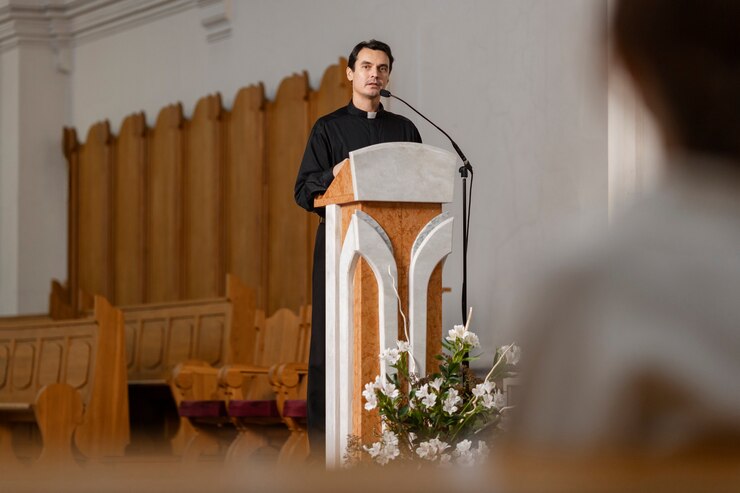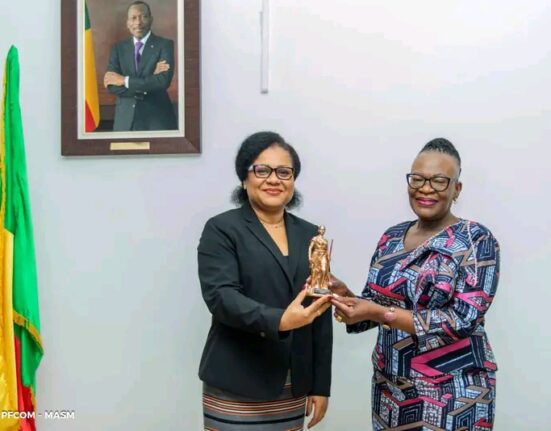The influence of missionary work in Namibia’s religious history is profound, shaping not only the spiritual lives of its people but also contributing to the social and cultural dynamics of the nation. From the early days of European colonialism to the emergence of independent Namibia, the work of missionaries played a critical role in transforming the religious, educational, and even political landscape of the country. While the impact of missionary activity is viewed differently by various groups, its legacy is undeniably significant in shaping the Namibia we know today.
This article delves into how missionary work influenced the development of religion in Namibia, exploring the introduction of Christianity, the establishment of churches and schools, and the broader social implications that followed. The article also examines the interaction between indigenous African beliefs and Christianity, as well as how mission-driven efforts contributed to the growth of local communities and their involvement in national governance.
The Arrival of Missionaries in Namibia
The history of missionary work in Namibia can be traced back to the 19th century when European explorers and missionaries first set foot in Southern Africa. The first notable missionaries to arrive in Namibia were from Germany, particularly from the Rhenish Missionary Society, which sent Protestant missionaries in the 1840s. Catholic missionaries from the Holy Ghost Fathers soon followed, marking the beginning of Christian proselytism in the country.
At the time, Namibia was inhabited by various indigenous ethnic groups, including the Herero, Damara, Nama, San, and Ovambo people, who practiced their own traditional religions based on ancestor worship, animism, and spiritual connection with nature. Missionary work introduced Christianity to these communities, offering an alternative to indigenous beliefs. The missionaries focused on spreading the Christian faith through preaching, education, and the establishment of churches and schools, marking the beginning of significant cultural change.
Christianity and the Missionary Influence
Christianity, particularly Protestantism and Catholicism, became the dominant religions in Namibia through the efforts of European missionaries. As the German colonial powers exerted control over Namibia in the late 19th century, the missionaries were often closely tied to the colonial administration, which used religion as a tool of control and cultural assimilation. Missionaries were often seen as agents of European imperialism, working to convert indigenous people to Christianity and replace their traditional religious practices with Western values.
However, the influence of missionaries was not purely negative. While the missionaries’ initial intent was often to civilize indigenous communities through Christianity, their efforts also brought about positive changes in terms of education, literacy, and healthcare. Missionaries established schools where they taught not only Christian doctrine but also subjects such as reading, writing, and mathematics, thus laying the groundwork for the development of an educated local population.
The Establishment of Churches and Religious Institutions
One of the most significant legacies of missionary work in Namibia is the establishment of churches and religious institutions. Protestant missionaries were instrumental in setting up a variety of Christian denominations, such as the Evangelical Lutheran Church in Namibia (ELCIN), which remains the largest Protestant denomination in the country today. Catholic missionaries also played a key role in establishing Catholic dioceses and parishes across the nation.
These religious institutions became central pillars of community life in Namibia, providing spiritual guidance, social services, and education. The churches organized regular worship services, baptized converts, and created social programs aimed at improving the welfare of local populations. Many churches also acted as mediators between the indigenous people and the colonial authorities, offering a space for dialogue and negotiation.
In some cases, mission stations grew into major centers of trade, agriculture, and culture, providing a platform for local people to interact with European settlers. In addition, church-run hospitals and clinics helped to introduce modern medical practices to a largely rural population, improving overall health outcomes.
The Influence of Missionary Work on Language and Education
The missionary effort to spread Christianity in Namibia was intertwined with an effort to spread the European languages, primarily German, English, and Afrikaans, replacing indigenous languages in many aspects of daily life. Missionaries developed written forms of many indigenous languages, which facilitated literacy and the ability to translate the Bible into local languages. Afrikaans became the language of instruction in many schools during the colonial period, and many indigenous people were taught in Afrikaans or German rather than their native tongues.
In terms of education, missionaries were responsible for introducing formal schooling to many communities. Missionary schools were often the only educational institutions available in rural areas, teaching reading, writing, arithmetic, and Christian doctrine. These schools helped many Namibians access educational opportunities that might otherwise have been out of reach, especially in remote areas.
However, the educational systems introduced by missionaries were not without their challenges. Missionary schools often operated within the confines of colonial policies, which were designed to reinforce social hierarchies. The curriculum was often geared towards training indigenous people to serve the needs of the colonial state, offering limited opportunities for higher education and the advancement of local communities in the political sphere.
Despite these limitations, missionary-led education laid the foundation for modern schooling systems in Namibia and provided a generation of Namibians with the tools to engage with the outside world.
The Cultural Impact: Syncretism and Indigenous Adaptations
The introduction of Christianity by missionaries led to significant cultural changes in Namibia, as indigenous communities encountered a new set of beliefs and practices. However, rather than simply replacing indigenous traditions, the interaction between Christianity and local beliefs often resulted in syncretism—a blending of traditional African religions and Christianity. Many Namibians continued to incorporate elements of their indigenous beliefs into their Christian practices, creating unique forms of Christianity that reflected both African and European traditions.
For example, many Himba, Herero, and Nama people practiced a form of Christianity that retained elements of their traditional spirituality, including ancestor veneration and rituals that were adapted to fit within a Christian framework. Similarly, traditional healing practices remained important alongside Christian beliefs, with church leaders and spiritual healers sometimes working together to address both physical and spiritual needs.
This blending of indigenous spirituality and Christianity created a distinctly Namibian form of Christian faith, one that was uniquely adapted to the needs and experiences of local communities.
Missionary Work and Social Change
Missionary work in Namibia was not limited to religious teachings; it also played a significant role in the broader social changes occurring in the country. Through their educational and healthcare initiatives, missionaries contributed to the growth of a more literate and informed population, which ultimately helped to shape the country’s future.
In addition, the missionaries’ commitment to improving living conditions through social services gave rise to greater community involvement and empowerment. Missionary-led efforts, such as building schools, hospitals, and community centers, helped foster a sense of social cohesion among local populations. These efforts laid the foundation for the development of civil society organizations and contributed to the eventual rise of independence movements in Namibia.
The relationship between missionary work and the independence struggle in Namibia is complex. While many missionaries supported colonial powers, others actively advocated for African rights and self-determination. Some missionary groups were even instrumental in challenging discriminatory laws and promoting social justice for indigenous Namibians.
The Legacy of Missionary Work in Namibia Today
Today, Namibia is a secular country with a multi-religious society, but the influence of missionary work can still be seen in the nation’s religious landscape. Christianity remains the dominant religion, with the majority of the population identifying as Christian. Protestantism and Catholicism are the largest denominations, but there is also a growing presence of Pentecostal and Evangelical Christian groups.
While mission churches continue to provide spiritual guidance to communities across Namibia, there has been a growing movement toward religious pluralism and interfaith dialogue. Many Namibians now practice a variety of religions, including indigenous African beliefs, Islam, and Judaism.
Missionary organizations and churches continue to play a role in Namibian society, particularly in areas such as education, healthcare, and social services. However, the power dynamics between missionaries and local communities have evolved, with Namibians now leading the charge in promoting religious freedom and social development.
Missionary work has had a profound impact on Namibia’s religious, social, and cultural development. While missionaries introduced Christianity and played a significant role in the modernization of Namibian society, their work also sparked cultural exchange, adaptation, and the creation of unique local expressions of Christianity. The legacy of missionary efforts can still be seen in the country’s education system, religious institutions, and the diversity of faith practices that exist today.
As Namibia continues to evolve in the 21st century, the role of religion in the country remains significant, and the historical influence of missionaries will continue to shape the nation’s spiritual and cultural identity for generations to come.













